Sound healing training is an exploration of the history, science, and practice of using sound as a therapeutic tool.
This training delves into the various techniques and instruments that can be used to promote relaxation, stress relief, and overall well-being.
Definition and History of Sound Healing
Sound healing is an ancient practice that has been used across various cultures and traditions to promote healing and wellness. It involves the use of sound vibrations to balance the body, mind, and spirit.
The scientific basis for sound healing lies in the fact that sound vibrations can influence the human energy field, the chakras, and the nervous system, leading to a range of physical, mental, and emotional benefits.
Benefits of Sound Healing
Sound healing offers numerous benefits, including:
- Reducing stress and anxiety
- Enhancing relaxation and comfort
- Balancing the nervous system
- Releasing blocked energy
- Promoting emotional release and healing
- Supporting spiritual growth and self-discovery
Techniques and Instruments Used in Sound Healing
There are various techniques and instruments used in sound healing, including:
- Voice (chanting, singing, toning)
- Tuning forks
- Crystal singing bowls
- Gongs and bells
- Drums and rattles
- Didgeridoos and Native American flutes
These instruments can be used individually or in combination to create a unique sound healing experience tailored to the individual's needs and preferences.
In some cases, sound healing may be combined with other holistic practices, such as yoga, meditation, or reiki, to enhance the overall effect.
Getting Started with Sound Healing Training
Whether you are interested in sound healing training for personal growth or to become a professional sound healer, there are numerous online and in-person courses available that can help you on your journey.
These courses typically cover the history, benefits, physiological impacts, ethics, and common instruments used in sound healing, as well as providing hands-on experience and practice sessions.
Choosing the Right Sound Healing Teacher Training
Key Essentials to Look for in a Sound Healing Training Program
When choosing a sound healing training program, consider the following essentials:
- Comprehensive curriculum: Ensure the program covers a wide range of sound healing instruments and techniques, such as tuning forks, gongs, Tibetan singing bowls, and voice.
- Experienced instructors: Look for a program with experienced instructors who have a strong background in sound healing and can provide valuable insights and guidance.
- Hands-on experience: Choose a program that offers hands-on experience with various sound healing instruments and techniques, as this will help you develop your skills and confidence.
- Vibroacoustics, Psychoacoustic Music, and Cymatics: Make sure the program teaches about vibroacoustics, psychoacoustic music, cymatics, and specific frequencies, as these are essential aspects of sound healing.
- Online and in-person options: Opt for a program that offers both online and in-person training options, giving you the flexibility to learn from anywhere and attend hands-on workshops when possible.
Tips for Finding a Reputable Training Program
To find a reputable, sound healing training program, follow these tips:
- Research: Conduct thorough research on the internet, read reviews, and ask for recommendations from friends or colleagues who have gone through sound healing training.
- Accreditation: Look for accreditation from reputable organizations, such as the International Institute for Complementary Therapists (IICT), which can provide a sense of credibility and professionalism.
- Networking opportunities: Choose a program that connects you with a community of like-minded individuals, as this can help you stay inspired, share experiences, and learn from others in the field.
- Insurance: Ensure the program offers professional indemnity insurance upon completion, which can be necessary for working in most countries worldwide as a sound healing practitioner.
- Post-training support: Opt for a program that provides post-training support, such as access to resources, online courses, and guidance from instructors, to help you navigate your journey as a sound healing practitioner.
What to Expect in Sound Healing Training

Cultural and Historical Background of Sound Healing
Sound healing training delves into the rich history and cultural origins of sound healing practices, providing a solid foundation for understanding the development and evolution of this powerful modality.
Science, Art, and Alchemy of Sound Healing
Exploring the intersection of science, art, and alchemy, sound healing training equips students with the knowledge and skills needed to harness the transformative power of sound for healing and personal growth.
Principles of Sound Healing and Its Healing Modality
Learning the fundamental principles of sound healing, students discover how sound can be used as a potent healing modality to address various physical, emotional, and spiritual concerns.
Sound Healing with Chakras and the Aura
Integrating sound healing techniques with chakra energy centers and the aura, students master the art of balancing and harmonizing the body's energy systems for optimal well-being.
Care and Storage of Sound Healing Instruments
Proper care and storage of sound healing instruments are essential for maintaining their effectiveness and longevity.
Students learn the best practices for handling, cleaning, and storing various sound healing tools.
Sound Healing Instruments
Sound healing is a therapeutic practice that uses various sound instruments to promote relaxation, stress relief, and overall well-being.
In this section, we will explore some common sound healing instruments and how they are used in sound healing sessions.
Tibetan Singing Bowls
Tibetan singing bowls are ancient instruments made from a combination of metals, such as bronze and iron.
When struck or rubbed with a mallet, they produce a rich, resonant sound that can induce a meditative state and promote relaxation.
Tuning Forks
Tuning forks are lightweight and portable instruments that emit powerful and pure frequencies when struck or applied to the body.
They are often used in sound healing to address energy blockages and stimulate the body's natural healing processes.
Gongs
Gongs are large, circular metal instruments that produce a deep, resonant sound when struck with a mallet.
They are known for their ability to create a meditative state and promote relaxation, as well as their potential to stimulate the release of endorphins, the brain's feel-good chemicals.
Drums
Drums, such as shamanic frame drums, are used in sound healing to create a steady rhythm that can induce alpha waves in the brain, promoting well-being and happiness.
Crystal Bowls
Crystal singing bowls are made from pure quartz crystal and produce a clear, bell-like tone when struck or rubbed with a mallet.
They are known for their ability to promote relaxation and stress relief, as well as for their potential to balance the body's energy centers.
Techniques and Approaches in Sound Healing
Role of Vocal Toning and Mantras in Sound Healing
Sound healing training often incorporates vocal toning and mantras to harmonize the body's energy centers, known as chakras.
By toning different vowel sounds, one can harmonize the seven main chakras, promoting balance and well-being.
Harmonizing the chakras with bija mantras
Toning the bija mantras on different notes while harmonizing the chakras is another technique used in sound healing. This practice helps to restore balance and energy flow throughout the body.
Healing with various instruments
Sound healing training may also include the use of other healing instruments, such as Tibetan bowls, tuning forks, gongs, drums, and crystal bowls.
These instruments can be applied both on and off the body, promoting relaxation, pain relief, and overall well-being.
Conclusion
Dipping into the vast expanse of sound healing training, it's evident that it not only roots in traditional cultures but also intersects and works collaboratively with modern science.
It provides numerous mental, emotional, and physical benefits by employing a variety of techniques and instruments specifically tailored to individual needs. Selecting the right training program ensures that the participant learns from experienced professionals with hands-on experience.
In an effort to connect with and explore this therapeutic world, The Sound Artist provides an excellent gateway. Offering a diverse array of music-related services, sound healing training is a featured highlight, giving individuals the chance to delve into the intriguing science and art behind sound healing.
As you embark on a transformative journey of personal growth, The Sound Artist invites you to join us, nurturing your passion from an initial spark to a full flame.


